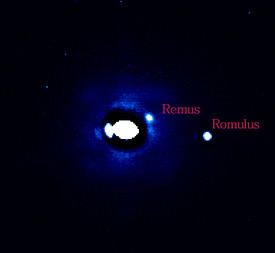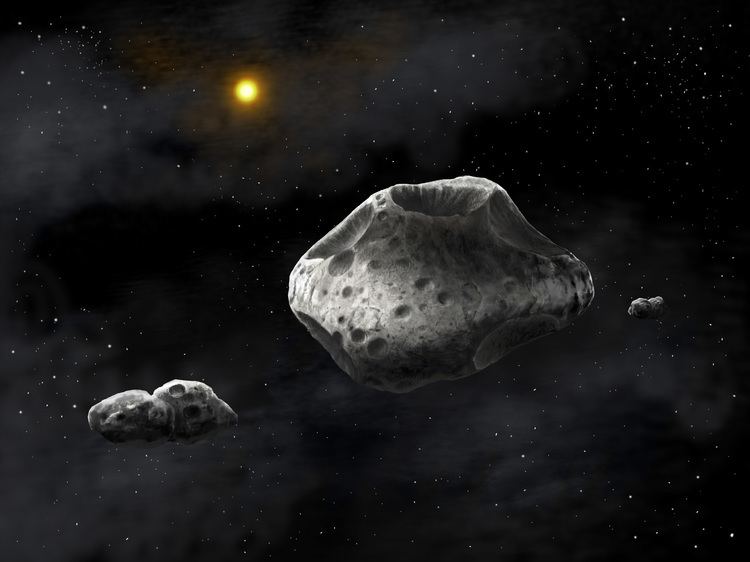Discovered by Norman Robert Pogson Pronunciation /ˈsɪlviə/ SIL-vee-ə Aphelion 3.768 AU (563.679 Gm) Discovered 16 May 1866 Discoverer N. R. Pogson | Discovery date May 16, 1866 Alternative names A909 GA Orbital period 2,382 days Perihelion 480.658374 billion m Orbits Sun | |
 | ||
Minor planet category Outer main belt (Cybele) Similar N R Pogson discoveries, Other celestial objects | ||
Pachelbel canon asteroid 87 sylvia
87 Sylvia is the 8th-largest asteroid in the asteroid belt. It is a member of the Cybele group located beyond the core of the belt (see minor-planet groups). Sylvia is the first asteroid known to possess more than one moon.
Contents
- Pachelbel canon asteroid 87 sylvia
- 87 sylvia an unusual asteroid
- Discovery and naming
- Physical characteristics
- Satellite system
- References

87 sylvia an unusual asteroid
Discovery and naming

Sylvia was discovered by N. R. Pogson on May 16, 1866 from Madras (Chennai), India. A. Paluzie-Borrell, writing in Paul Erget's The Names of the Minor Planets (1955), mistakenly states that the name honours Sylvie Petiaux-Hugo Flammarion, the first wife of astronomer Camille Flammarion. In fact, in the article announcing the discovery of the asteroid, Pogson explained that he selected the name in reference to Rhea Silvia, mother of Romulus and Remus (MNRAS, 1866).
Physical characteristics

Sylvia is very dark in color and probably has a very primitive composition. The discovery of its moons made possible an accurate measurement of the asteroid's mass and density. Its density was found to be very low (around 1.2 times the density of water), indicating that the asteroid is porous to very porous; from 25% to as much as 60% of it may be empty space, depending on the details of its composition. However, the mineralogy of the X-type asteroids is not known well enough to constrain this further. Either way, this suggests a loose rubble pile structure. Sylvia is also a fairly fast rotator, turning about its axis every 5.18 hours (giving an equatorial rotation velocity of about 230 km/h or 145 mph). The short axis is the rotation axis. Direct images indicate that Sylvia's pole points towards ecliptic coordinates (β, λ) = (+62.6°, 72.4°) with only a 0.5° uncertainty, which gives it an axial tilt of around 29.1°. Sylvia's shape is strongly elongated.
Satellite system

Sylvia has two orbiting satellites. They have been named (87) Sylvia I Romulus and (87) Sylvia II Remus, after Romulus and Remus, the children of the mythological Rhea Silvia.
Romulus, the first moon, was discovered on February 18, 2001 from the Keck II telescope by Michael E. Brown and Jean-Luc Margot. Remus, the second moon, was discovered over three years later on August 9, 2004 by Franck Marchis of UC Berkeley, and Pascal Descamps, Daniel Hestroffer, and Jérôme Berthier of the Observatoire de Paris, France.
The orbital properties of the satellites are listed in this table. The orbital planes of both satellites and the equatorial plane of the primary asteroid are all well-aligned; all planes are aligned within about 1 degree of each other, suggestive of satellite formation in or near the equatorial plane of the primary.
